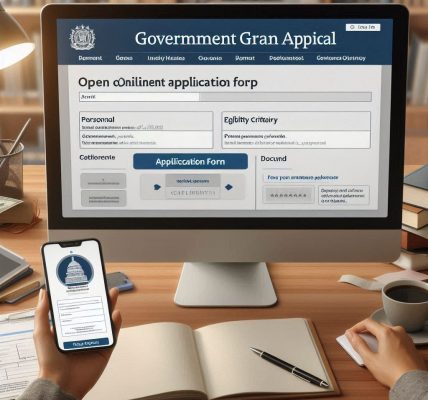In an era dominated by rapid technological advancements, research and innovation have become essential for driving economic growth and solving pressing global challenges. From artificial intelligence and renewable energy solutions to healthcare advancements and sustainable infrastructure, technology and innovation are at the heart of shaping a better future.
However, research projects and innovation come with significant costs. Funding such initiatives can be a major challenge, especially for startups, small businesses, and academic institutions. To address this, governments, private organizations, and international bodies offer various Tech and Innovation Grants designed to support research and development (R&D) activities.
If you are involved in tech or innovation-focused projects and are looking for financial assistance, understanding how to access these grants is essential. In this article, we will provide a comprehensive guide on how to secure funding for tech and innovation research projects in 2025, outlining the different grants available, eligibility criteria, application processes, and expert tips to help increase your chances of success.
What Are Tech & Innovation Grants?
Tech and Innovation Grants are financial awards provided by governments, foundations, corporations, and other funding bodies to support innovative projects, research, and development activities. These grants are specifically designed to encourage the creation of new technologies, improve existing products and services, and promote scientific advancements that benefit society.
Unlike loans or investments, grants do not need to be repaid. They are offered with the intention of advancing research and technological development across various fields, including but not limited to:
- Artificial Intelligence (AI)
- Clean Energy
- Biotechnology and Healthcare
- Environmental Sustainability
- Cybersecurity
- Digital Transformation
Why Apply for Tech & Innovation Grants?
Tech and innovation grants offer numerous benefits, including:
- Non-repayable funding: Unlike loans, grants do not require repayment, providing financial relief for research teams and businesses.
- Risk reduction: Grants mitigate financial risks, allowing researchers and developers to focus on their work without the constant pressure of securing alternative funding.
- Access to resources: In addition to funding, grants often provide access to resources such as mentorship, collaboration opportunities, and networking within the research and innovation ecosystem.
- Increased credibility: Receiving a prestigious grant adds credibility to your project, increasing its visibility and attracting potential investors or collaborators.
- Support for groundbreaking ideas: Tech grants help push the boundaries of innovation, giving researchers the freedom to explore bold, novel ideas that might otherwise struggle to secure funding.
Types of Tech & Innovation Grants Available
The world of tech and innovation funding is vast, and there are several types of grants available to support different sectors and stages of research and development. Below are some of the most common types of tech and innovation grants:
1. Government Innovation Grants
Many governments around the world offer grants specifically targeted at fostering innovation and technological development. These grants are often part of national strategies to boost economic growth, tackle climate change, improve public services, and support industrialization. For example:
- Horizon Europe (EU): A flagship funding program that supports cutting-edge research in science, technology, and innovation.
- SBIR and STTR Programs (USA): The Small Business Innovation Research (SBIR) and Small Business Technology Transfer (STTR) programs provide grants to U.S.-based small businesses working on innovative projects.
- Innovate UK (UK): A government-funded initiative offering grants to tech startups and SMEs focusing on disruptive technologies and innovation.
2. Corporate and Private Sector Grants
In addition to government-funded grants, large corporations often offer funding through their corporate social responsibility (CSR) initiatives or dedicated innovation programs. These grants are typically aimed at fostering partnerships with startups and research institutions. Examples include:
- Google AI for Social Good: A program that offers grants and resources to AI projects focused on social impact.
- Microsoft’s AI for Good: Aimed at supporting nonprofits and businesses leveraging AI to address societal issues.
- Tesla Impact Grants: A program dedicated to promoting innovation in renewable energy, electric vehicles, and sustainability.
3. Research Institution and University Grants
Universities and research institutions often provide internal grants for technology and innovation projects. These grants may be tied to specific fields of research, such as AI, clean energy, or biomedical engineering. These grants are usually available to students, professors, and academic researchers who are looking to push the boundaries of science and technology.
4. Nonprofit and Foundation Grants
Several nonprofit organizations and philanthropic foundations provide grants for innovative research in specific fields. These grants may be more flexible and offer opportunities to explore cutting-edge technologies and scientific breakthroughs. Examples include:
- The Bill & Melinda Gates Foundation: Focused on supporting innovation in global health and development.
- The Wellcome Trust: A UK-based foundation funding projects in medical research and health innovations.
- The Ford Foundation: Known for funding projects that use technology to improve social justice.
5. Accelerators and Incubator Grants
Technology accelerators and incubators are programs designed to support early-stage startups through mentorship, networking, and funding opportunities. These programs often include grants as part of their offerings, along with access to other resources such as office space, legal support, and venture capital connections.
How to Secure Tech & Innovation Grants
Securing tech and innovation grants can be a competitive process, and it is important to follow a structured approach when applying. Below are steps to help increase your chances of successfully securing funding:
1. Understand the Eligibility Criteria
Each grant has specific eligibility requirements. Before applying, ensure that your project aligns with the grant’s objectives and that you meet the eligibility criteria. For example, some grants may be exclusively available to small businesses, while others are only open to research institutions or non-profit organizations.
2. Develop a Strong Project Proposal
Your proposal is the most critical component of your application. It should clearly explain the goals of your research project, the potential impact of the technology, and why you need funding. Key aspects to include are:
- Executive Summary: A concise overview of the project, including objectives and expected outcomes.
- Research Plan: A detailed description of your methodology, timeline, and resources needed.
- Budget: A clear breakdown of how the grant money will be spent.
- Impact Assessment: How your project will contribute to technological advancements, sustainability, or other relevant sectors.
- Team Background: The qualifications and experience of your team members.
3. Demonstrate Innovation and Scalability
Most tech and innovation grants prioritize projects that have the potential to scale and create a significant impact. Make sure your proposal highlights:
- Innovative Approach: Explain how your project is different from existing solutions and how it pushes the boundaries of technology.
- Scalability: Discuss how the technology or innovation can be expanded or adapted to different markets or challenges.
4. Collaborate with Experts or Partners
Collaborating with other organizations, researchers, or industry experts can strengthen your proposal. For example, universities, research labs, and even other tech companies might be interested in partnering on a research project. Many grant programs favor collaborative projects, as they increase the chances of successful implementation and have a broader impact.
5. Ensure Compliance and Follow Deadlines
Grant applications often require a lot of documentation and must adhere to specific guidelines. Make sure your proposal complies with all the rules, including formatting, word limits, and required attachments. Missing or incomplete information could disqualify your application. Also, be mindful of deadlines, as late submissions are typically not considered.
6. Follow Up and Engage with Funding Agencies
After submitting your proposal, don’t hesitate to follow up with the funding agency. They may provide additional feedback or ask for more information. Keeping communication lines open will demonstrate your commitment to the project and your willingness to collaborate.
Common Challenges and How to Overcome Them
While applying for tech and innovation grants can be rewarding, there are common challenges that applicants face:
- High Competition: Many grants receive thousands of applications, making it difficult to stand out. To overcome this, ensure your proposal is clear, well-researched, and highlights the unique aspects of your project.
- Complex Application Process: The application process can be time-consuming and bureaucratic. To manage this, break down the tasks and start early to ensure you can gather all the necessary documents and information.
- Sustainability of the Project: Funding agencies often want to know how the project will be sustained after the grant period ends. Ensure your proposal includes a plan for scaling and securing additional funding.
Conclusion
Securing funding for research and innovation projects can be one of the most important steps toward bringing new technologies to life. With a wide range of tech and innovation grants available in 2025, there are more opportunities than ever for researchers, startups, and businesses to access the financial support needed to advance their projects. By understanding the available funding options, preparing a strong application, and demonstrating the potential of your project, you can increase your chances of securing the right grant and taking your innovation to the next level.
Remember, while the process can be competitive and challenging, the rewards are immense. Government, corporate, and nonprofit grants are critical drivers of technological development, and with the right approach, you can secure the funding needed to make a lasting impact.




